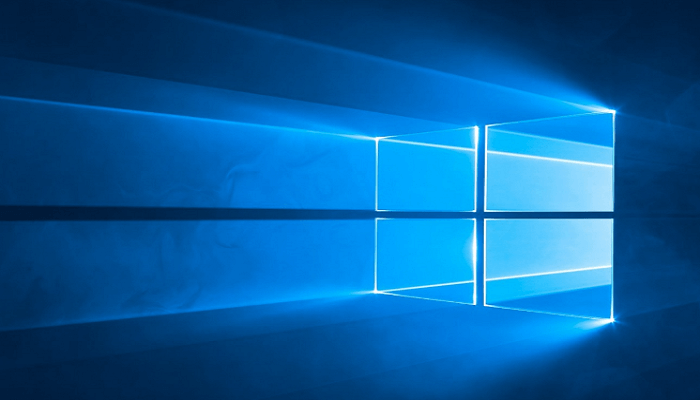Why is Windows So Expensive – As the most popular desktop operating system in the world, Microsoft Windows has a high market share, with many users willing to pay a premium for the latest version.
Some people may wonder why Windows is so expensive, especially when compared to other operating systems like macOS or Linux.
In this article, we will explore the 11 reasons why Windows is so expensive, including the cost of research and development, marketing, support, and licensing fees.
Why is Windows So Expensive?

One of the most common criticisms of Windows is its high price. Compared to other operating systems, such as Linux or macOS, Windows can be quite expensive, especially for those who need to purchase a new license or upgrade to a newer version.
The high cost of Windows has led many users to wonder why it is so expensive, and whether there are valid reasons for the steep price tag.
In this context, it’s important to consider the various factors that contribute to the cost of Windows, such as the significant development and maintenance expenses associated with creating and updating a complex operating system.
The Cost of Research and Development

One of the main reasons behind the high cost of Windows is the extensive research and development that goes into each new version.
Microsoft invests millions of dollars into developing new features, improving performance, and fixing bugs.
The company also conducts extensive user testing to ensure that each new release is stable and reliable.
Marketing and Advertising Costs
In addition to research and development, Microsoft spends a considerable amount on marketing and advertising Windows to potential customers.
This includes TV commercials, online ads, and promotional events. These costs are factored into the price of the operating system, making it more expensive for consumers.
Ongoing Support and Updates
Another factor contributing to the high cost of Windows is ongoing support and updates. Microsoft provides regular security patches and bug fixes to ensure that Windows is as stable and secure as possible.
This requires a significant investment in manpower and resources, which is reflected in the price of the operating system.
Compatibility with Hardware and Software
Microsoft works hard to ensure that Windows is compatible with a wide range of hardware and software. This requires extensive testing and development, which again adds to the cost of the operating system.
Licensing Fees for Third-Party Software
Windows includes a number of third-party applications, such as Internet Explorer, Microsoft Edge, and Windows Media Player.
Microsoft pays licensing fees to these companies to include their software in Windows, which is passed on to the consumer in the form of a higher price tag.
Development and Support for Multiple Versions
Microsoft continues to support older versions of Windows, such as Windows 7 and Windows 8.1, which require ongoing development and support.
This adds to the cost of Windows for new customers, who are effectively paying for the ongoing maintenance of older versions of the operating system.
Anti-Piracy Measures
Piracy is a major issue for software companies, and Microsoft is no exception. The company invests significant resources into developing anti-piracy measures to prevent unauthorized copying and distribution of Windows.
These measures add to the cost of the operating system, as they require ongoing development and maintenance.
Volume Licensing and Enterprise Features
Windows also offer enterprise features and volume licensing options for businesses, which can be more expensive than the standard retail version.
These features and licensing options are designed to meet the needs of larger organizations, which require more advanced security and management features.
The Cost of Physical Media
While many users download Windows directly from Microsoft’s website, others may prefer to purchase a physical copy on a DVD or USB drive.
The cost of producing and distributing physical media is passed on to the consumer, making the retail version of Windows more expensive than the digital download.
Revenue and Profit Margins
The price of Windows is determined by the revenue and profit margins that Microsoft wants to achieve. The company is a for-profit business, and it sets the price of Windows based on a variety of factors, including the cost of development, marketing, and ongoing support.
Competition from Other Operating Systems
Although Windows dominates the desktop operating system market, it faces competition from other platforms like macOS and Linux.
Microsoft may need to keep its prices competitive to maintain its market share
FAQs:
Windows is one of the most popular operating systems in the world, but it also comes with a high price tag. Many users wonder why Windows costs so much, especially when there are free alternatives available.
We will explore some frequently asked questions about why Windows is so expensive and provide answers that shed light on this topic.
Whether you are a student, a non-profit organization, or an everyday user, understanding the reasons behind the high cost of Windows can help you make informed decisions about your operating system choices.
Is it worth buying Windows instead of using a free operating system like Linux?
It depends on your specific needs and preferences. Windows may be a better option for users who require specific software or hardware compatibility, while Linux may be more suitable for users who prioritize open-source software and customization options.
Can I get a discount on Windows if I am a student or work for a non-profit organization?
Microsoft offers various discounts for students and non-profit organizations, so it’s worth checking their website for current promotions.
Why are Mac computers more expensive than Windows PCs?
Mac computers are typically more expensive than Windows PCs due to their high-quality hardware, design, and software. Apple also has a reputation for charging a premium for its products.
How often does Microsoft release a new version of Windows?
Microsoft releases new versions of Windows every few years, with major updates and patches released more frequently.
Can I install Windows on multiple devices with one license?
The terms of Microsoft’s licensing agreements vary depending on the version of Windows and the type of license. Some licenses allow for installation on multiple devices, while others may restrict use to a single device.
Can I use an older version of Windows instead of the latest version?
While Microsoft recommends using the latest version of Windows for security and performance reasons, it is possible to use an older version if it meets your needs. However, Microsoft may eventually stop providing updates and support for older versions of Windows.
Is it possible to use Windows for free?
Microsoft offers a free version of Windows called Windows 10 in S mode, which is designed for low-powered devices and limited to apps from the Microsoft Store. However, the full version of Windows requires a license, either through a purchase or through a volume licensing agreement.
Conclusion: Why Is Windows So Expensive
In conclusion, there are numerous factors that contribute to the high cost of Windows. Microsoft invests a significant amount of resources in research and development, marketing and advertising, and ensuring compatibility with various hardware and software.
Licensing and distribution costs, as well as the company’s need for revenue, also contribute to the high cost of Windows.
While there are free alternatives like Linux available, Windows continues to be a popular operating system due to its widespread compatibility, user-friendly interface, and extensive software library.
The decision to purchase Windows or opt for a free alternative depends on individual needs and preferences.
Related:
- Why Are Beats So Expensive
- Why is Cox So Expensive
- Why is Premiere Pro So Expensive
- Why Are Motherboards So Expensive
- Why Are Hard Drives So Expensive
- Why Are Mechanical Keyboards So Expensive
- Why is Audible So Expensive
- Why Are PC Parts So Expensive
- Why is Ram So Expensive
- Why Are Graphics Card So Expensive
- Why is Ableton So Expensive
- Why is CASETiFY So Expensive